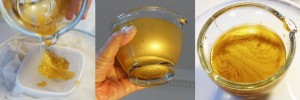Nautilus Spiral Print

Some years ago, an inspired private collector commissioned me to do this painting. Its image online has since become very popular, with many requests for prints – so, I have finally decided to make it available as an authenticated limited edition.
Available to order: the print comes in two sizes – 18 X 14 inches, which is close to the original size, and 23 X 18 inches, which gives a little more impact. It is printed in London by a leading fine-art printer – gallery-quality Giclée printing on thick archival paper, carefully calibrated for accurate colour reproduction.
The original painting took me the best part of a year to complete. We worked together very carefully on the layout and composition during our numerous consultation meetings, before I settled down to the actual painting.The method of painting and the pigments I used were based on those used by Persian manuscript illuminators in the 15th and 16th centuries, a subject that I have been researching for some 30 years. All those magical animals prowling around the central motif are drawn with a fine pointed brush using black watercolour, over a wash of 24 carat gold – giving the original painting a subtle gleam (which cannot be replicated in a print). Margins like this became popular in elite manuscripts from the late 15th century onwards.
The central illuminated element is a departure from the traditional motif, which would normally have been a “Shamsa” or sunburst – a circular device with a symmetrical radial design. Princely manuscripts often had this motif as a frontispiece, often with the design reflected over a double-page spread, like a glorious portal leading into the book. We see this device both in sacred Qur’ans and in secular works of Persian literature.
This painting is unusual, in that the Shamsa takes the form of a special kind of logarithmic spiral based on the Fibonacci number sequence, similar to that of the Nautilus shell. It was exhibited at the Brunei Gallery in London, part of the School of Oriental and African Studies, University of London, as part of a solo show in which I explored Persian illumination and its relationship to mathematical concepts.
You can see more of this series of work at my main website under Islamic Fractals.
If you are curious about the Fibonacci Spiral, you will find an explanation at Pierre Carrée (Square Stone), an informative Math blog.



 "Making Masterpieces for a Prince of the Black Sheep" – my Bodleian Fellowship research blog
"Making Masterpieces for a Prince of the Black Sheep" – my Bodleian Fellowship research blog "The Book of Gold" – Gold pigment tutorial available from my Etsy shop
"The Book of Gold" – Gold pigment tutorial available from my Etsy shop
Hi
Very impressive and although I admire fine art and am myself an artist I would never manage to do the likes of this. I am not that meticulous ha ha.
God bless you
Joe.
LikeLiked by 1 person
Thankyou so much Joe! It looks like you are a sculptor, which is impressive.
LikeLike